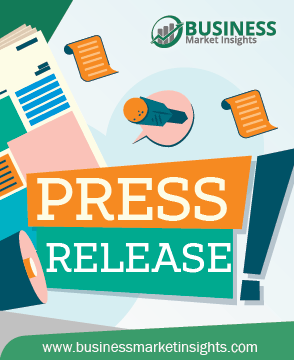
Published On: Feb 2023

Published On: Feb 2023

At 3.4% CAGR, the Middle East & Africa Pharmaceutical Fluid Handling Market is projected to be worth US$ 694.84 million by 2028, says Business Market Insights
According to Business Market Insights’ research, the Middle East & Africa pharmaceutical fluid handling market was valued at US$ 567.15 million in 2022 and is expected to reach US$ 694.84 million by 2028, registering an annual growth rate of 3.4% from 2022 to 2028. Automated fluid handling systems with machine learning and increase in vaccine production are the critical factors attributed to the Middle East & Africa pharmaceutical fluid handling market expansion.
A fluid handling system is critical for preparing, moving, and storing fluids required in the manufacturing and sanitation of the biotechnology or pharmaceutical plant. Automated fluid handling systems in pharmaceutical or biotechnology manufacturing plants will simplify the process and increase its accuracy. Automated process reduces procedural errors, which reduces the instance of rejected batches. Further, automated handling will directly clean the fluid handling system and manufacturing unit without requiring special preparation for the cleaning process. In addition to controlling various stages of automatic liquid handling by artificial intelligence and utilizing internet connectivity to interact remotely with handlers, the application of artificial intelligence to automated liquid handling offers lucrative opportunities. Machine learning will enable the software to provide high levels of error control and adapt instruments to new situations such as reacting to a defect in a disposable tip or compensating for a blocked nozzle when handling samples using machine learning. Furthermore, the introduction of new products enhances market growth. Thus, the use of an automated fluid handling system integrated with machine learning is likely to fuel the Middle East & Africa pharmaceutical fluid handling market during the forecast period.
On the contrary, high price of failed clinical trails hurdles the growth of Middle East & Africa pharmaceutical fluid handling market.
Based on offering, the Middle East & Africa pharmaceutical fluid handling market is segmented into equipment & solutions and services. The equipment segment held 84.4% market share in 2022, amassing US$ 478.82 million. It is projected to garner US$ 580.56 million by 2028 to expand at 3.3% CAGR during 2022–2028.
Based on tubing, the Middle East & Africa pharmaceutical fluid handling market is segmented into TPE, PVC, and silicon. The silicon segment held 54.5% market share in 2022, amassing US$ 309.27 million. It is projected to garner US$ 375.87 million by 2028 to expand at 3.3% CAGR during 2022–2028.
Based on application, the Middle East & Africa pharmaceutical fluid handling market is segmented into fluid handling and management, fluid preparation, integration and automation, aseptic processing, buffer management, and others. The fluid handling and management segment held 33.1% of Middle East & Africa pharmaceutical fluid handling market share in 2022, amassing US$ 187.86 million. It is projected to garner US$ 225.95 million by 2028 to expand at 3.1% CAGR during 2022–2028.
Based on usage, the Middle East & Africa pharmaceutical fluid handling market is segmented into cough syrup, intravenous products, complex active pharmaceutical ingredients (APIs), and others. The cough syrup segment held 38.6% of Middle East & Africa pharmaceutical fluid handling market share in 2022, amassing US$ 219.06 million. It is projected to garner US$ 263.06 million by 2028 to expand at 3.1% CAGR during 2022–2028.
Based on end user, the Middle East & Africa pharmaceutical fluid handling market is segmented into biotechnology companies, pharmaceutical and medical companies, and others. The biotechnology companies segment held 47.4% of Middle East & Africa pharmaceutical fluid handling market share in 2022, amassing US$ 268.64 million. It is projected to garner US$ 338.78 million by 2028 to expand at 3.9% CAGR during 2022–2028.
Based on country, the Middle East & Africa pharmaceutical fluid handling market is segmented into Saudi Arabia, South Africa, UAE, and the Rest of Middle East & Africa. Our regional analysis states that Saudi Arabia captured 34.0% of Middle East & Africa pharmaceutical fluid handling market share in 2022. It was assessed at US$ 192.55 million in 2022 and is likely to hit US$ 231.73 million by 2028, exhibiting a CAGR of 3.1% during the forecast period.
Key players dominating the Middle East & Africa pharmaceutical fluid handling market are CIRCOR International Inc, Danaher Corp, Merck KGaA, Parker Hannifin Corp, RAUMEDIC AG, Rochling SE & Co KG, Spirax Sarco Engineering plc, and Tef Cap Industries Inc, among others.
Contact Us
Phone: +16467917070
Email Id: sales@businessmarketinsights.com